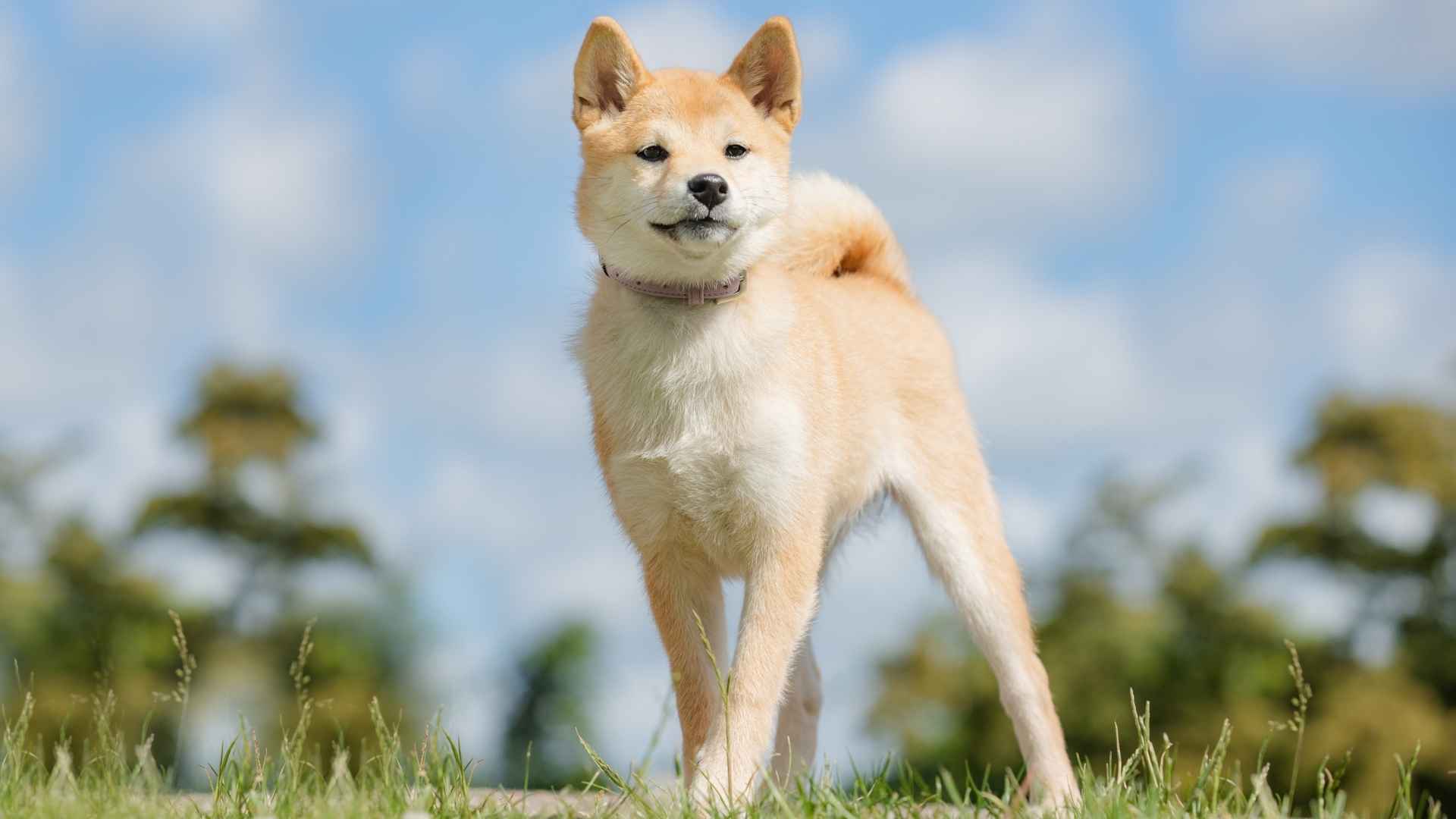Have you ever looked at a dog and thought, “Wait—what breed is that?”
With hundreds of dog breeds around the world, it’s easy to assume you’ve seen most of them. But you haven’t. Many breeds never make it to magazines or parks, or shows. They live quietly, often tied to one place, one culture, or one very specific purpose.
Their names are unfamiliar. Their features are surprising. But they’re every bit as loyal, loving, and fascinating as the breeds everyone talks about. And once you learn about them, it’s hard to forget them.
If you enjoy discovering things most people miss, you’re in for something special. This article will take you through a list of most rare dog breeds you’ve likely never heard of—but that might just steal your attention the moment you see them.
Dog Breeds You’ve Never Heard Of
1. Kooikerhondje
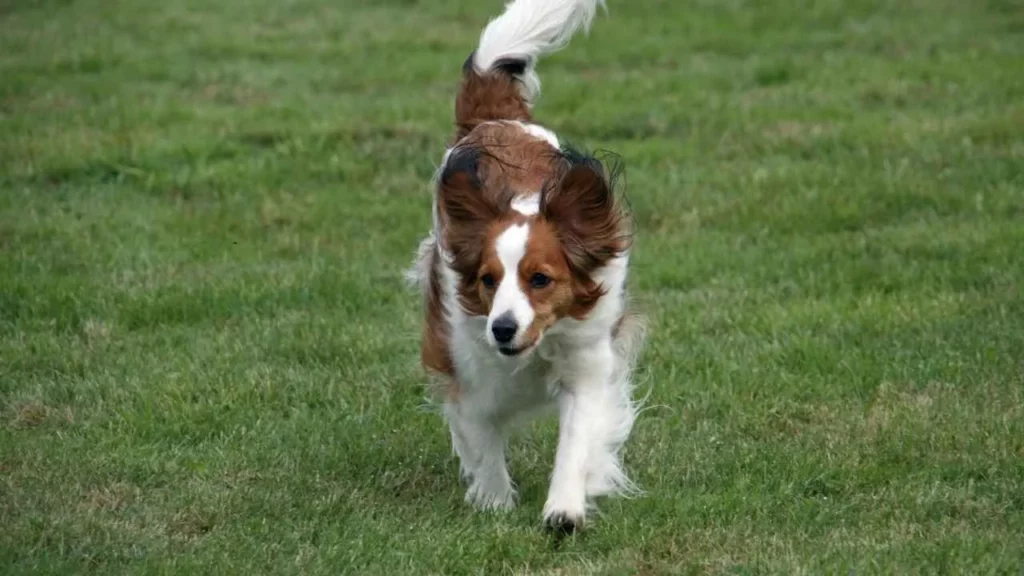
The Kooikerhondje was developed in the Netherlands as a duck decoy dog, quietly guiding birds into traps using its plumed tail. Their small frame and athletic structure were designed for quiet efficiency, not flashy display. Their history links back to paintings from the 1600s, showing their deep cultural roots.
Grooming Is Surprisingly Minimal
Their medium-length coat repels dirt naturally and rarely tangles, needing brushing just once or twice a week. Bathing isn’t frequent, and their fur dries quickly, even after outdoor play. Trimming is minimal, with no need for professional grooming unless desired.
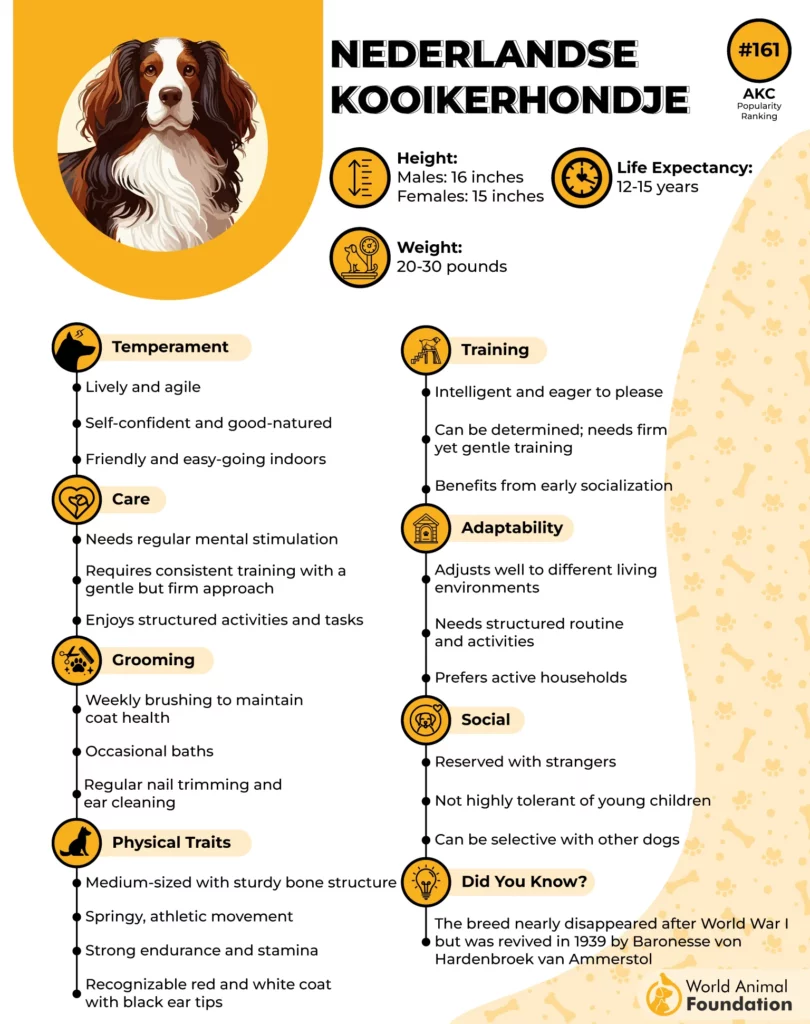
Calm Energy Indoors, Focus Outdoors
Kooikerhondjes stay calm and content inside, needing less daily activity than their agility might suggest, as per Omlet. A brisk walk or short play session is often enough to satisfy them. Indoors, they quietly settle without demanding constant attention or stimulation.
Rare and Historically Grounded
Though not widely seen, they’re gaining interest among those seeking practical dogs with low upkeep. As one of the rarest dog breeds, they’re still most popular in parts of Europe. Recognized as an ancient breed, their longevity and resilience have stood the test of time.
2. Sloughi
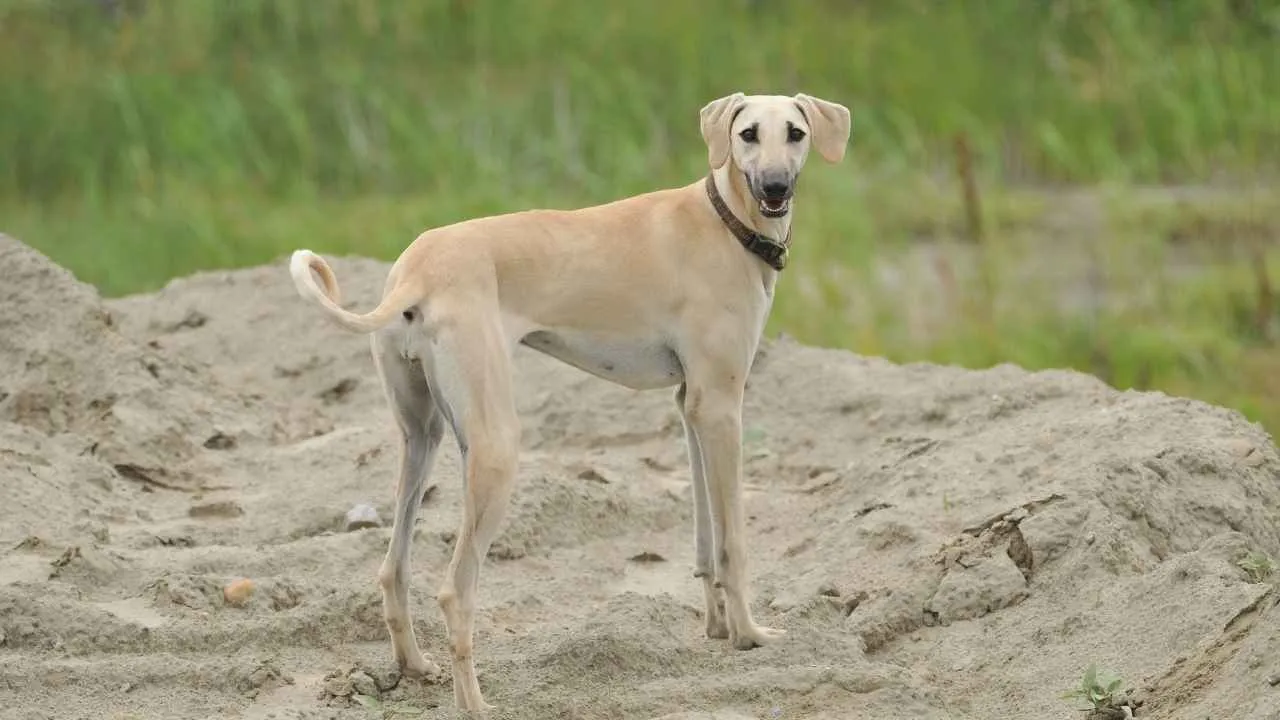
The Sloughi’s short, smooth coat lies flat and requires very little maintenance beyond a weekly brush. Their skin is tight and rarely traps dirt, which lowers the chances of skin irritation or buildup. They shed lightly year-round and need bathing only when visibly dirty.
Adapted to Harsh Desert Conditions
Originally bred in North Africa, the Sloughi was valued by nomads for its durability and self-sufficiency, as stated in Sloughi International. Their ability to handle both heat and activity with minimal fuss makes them highly adaptable indoors and out. They conserve energy efficiently, resting for long stretches when unoccupied.
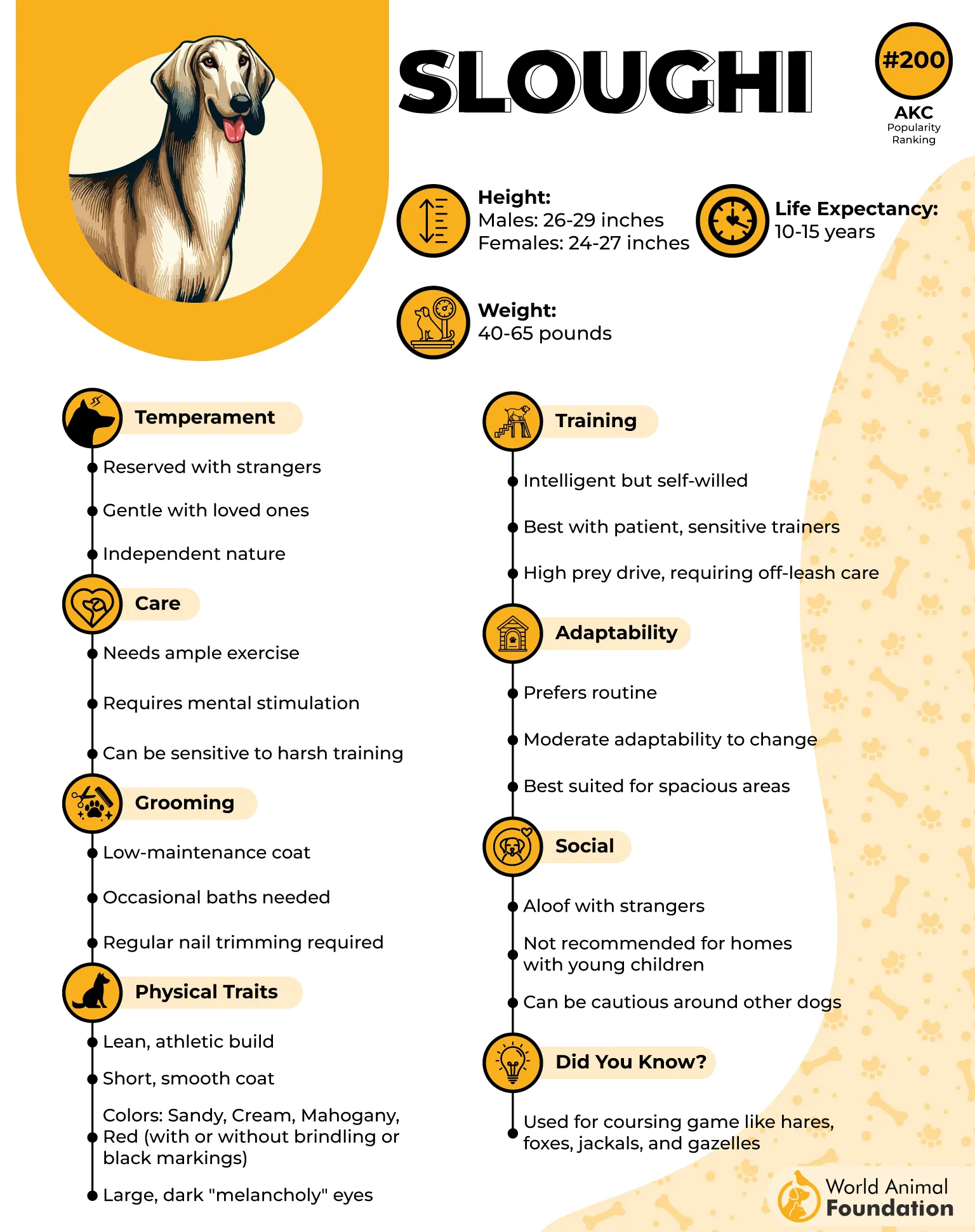
Independent but Predictable Temperament
They form strong attachments but are quiet and often prefer calm, familiar surroundings. Their loyalty doesn’t require constant reassurance or attention, making them low effort in emotionally managing. Socialization from an early age helps maintain their even, reserved nature.
Athletic Yet Low-Key at Home
While highly capable of speed and performance, Sloughis remain composed indoors and aren’t hyperactive. They have natural stamina, and some owners involve them in dog sports for mental balance. Being a rare breed, they are still mostly found among enthusiasts familiar with sighthounds.
3. Lagotto Romagnolo
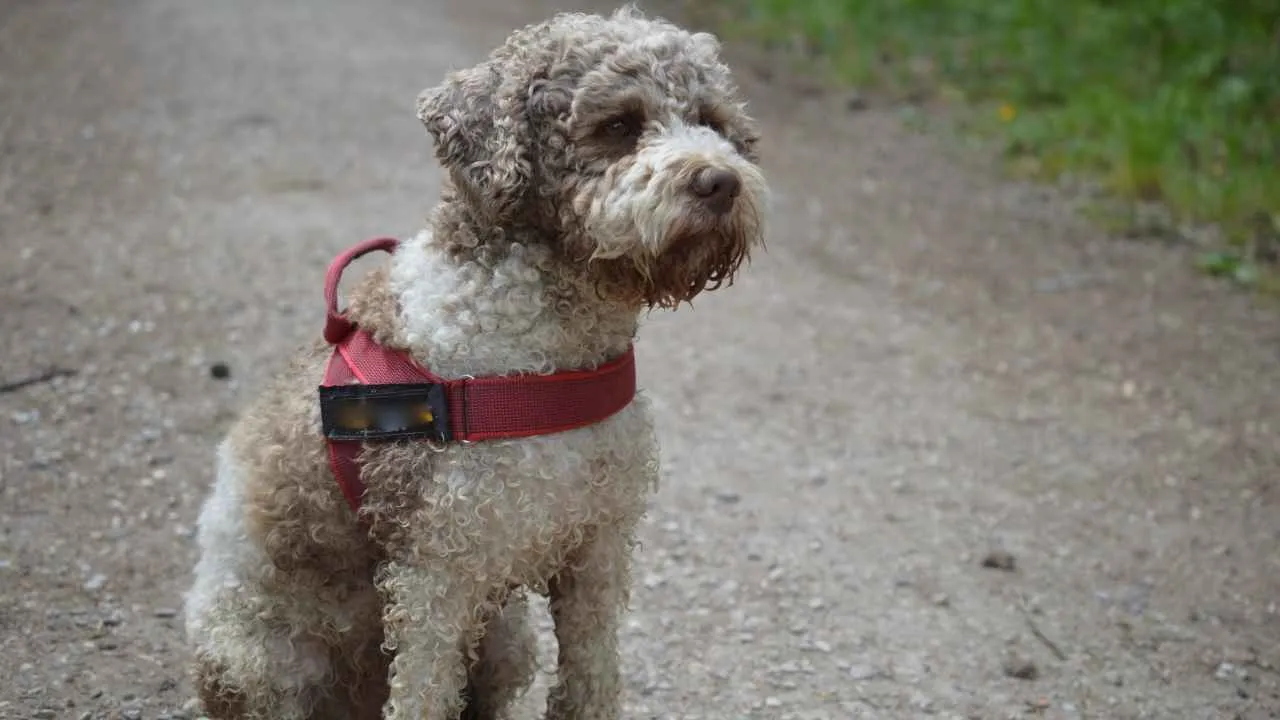
The Lagotto’s coat is thick, curly, and water-resistant, built for working through wet terrain and dense underbrush. It sheds very little and grows evenly, requiring trimming every few months. Its wool-like texture helps trap dirt away from the skin, keeping maintenance low.
Simple Grooming, No Heavy Odor
This breed doesn’t carry the strong doggy odor common to many water breeds. Brushing a few times a week helps prevent matting, especially around the ears and limbs. Their grooming needs are predictable, with no undercoat blowouts or excessive seasonal shedding.
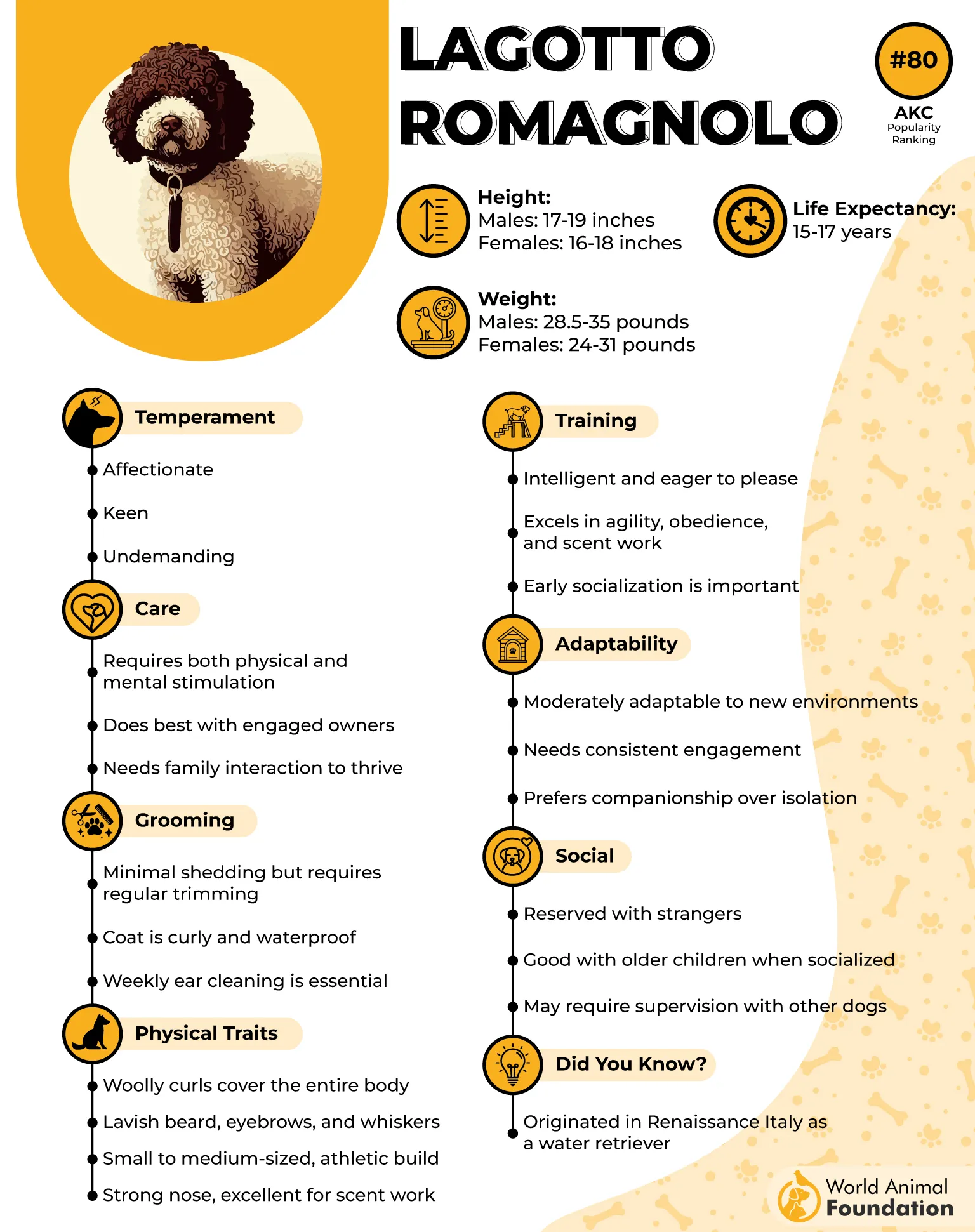
Active Outside, Easygoing Inside
While they enjoy movement, they adapt well to indoor calm once exercised. A compact yard or open walk is usually enough to keep them content. Structured games and tracking activities are great tools for physical and mental stimulation.
Rooted in Utility and Focus
Historically trained as a truffle hunter, this breed has a sharp nose and focused drive, but doesn’t overwhelm with energy, as stated in WebMD. They’re methodical, responsive, and easy to train. As a former hunting dog, they have retained the working focus without the high reactivity of other sporting breeds.
4. Bergamasco Sheepdog
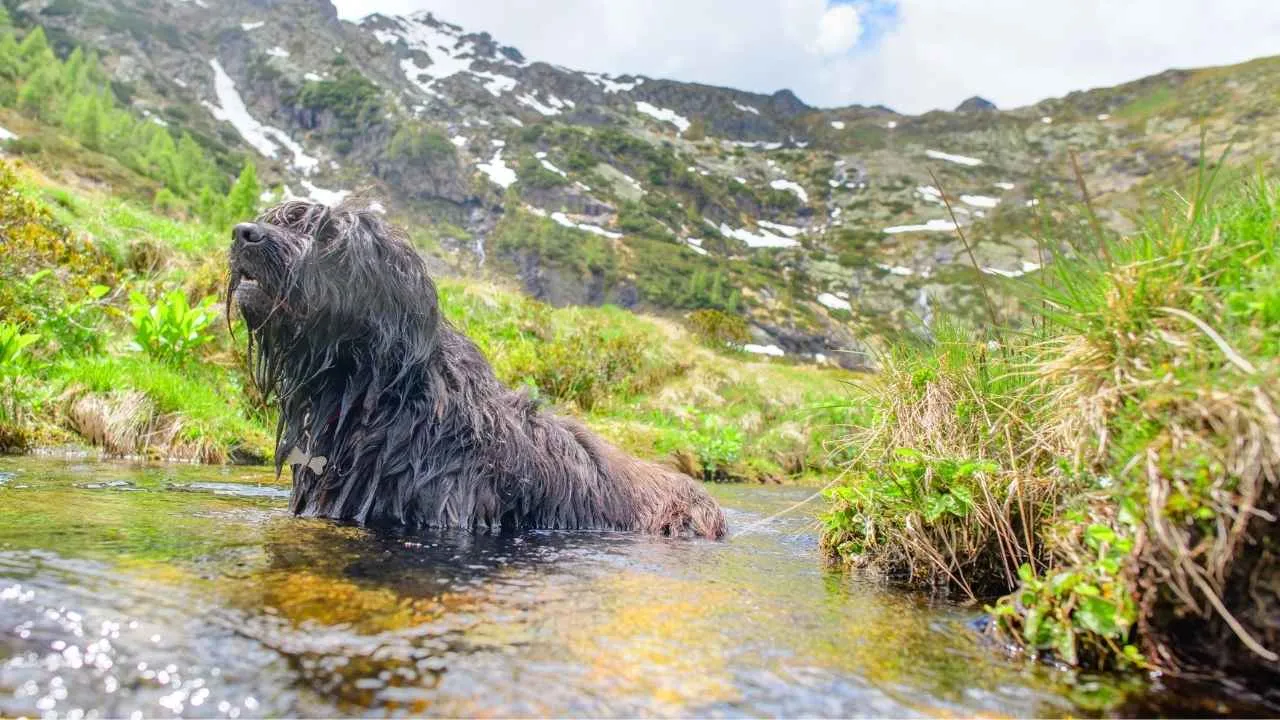
The Bergamasco has a unique coat made of three types of hair that naturally weave into loose mats, forming flocks as the dog matures. This coat requires almost no brushing and never needs to be trimmed. Once fully developed, its texture acts as protection while also preventing excessive shedding.
Minimal Grooming After Maturity
In the early months, coat care involves separating the hair into flocks by hand, done only once in their lifetime. After that, the coat remains nearly self-sustaining with occasional rinsing and rare bathing. No routine trips to the groomer are necessary, even with heavy coat volume.
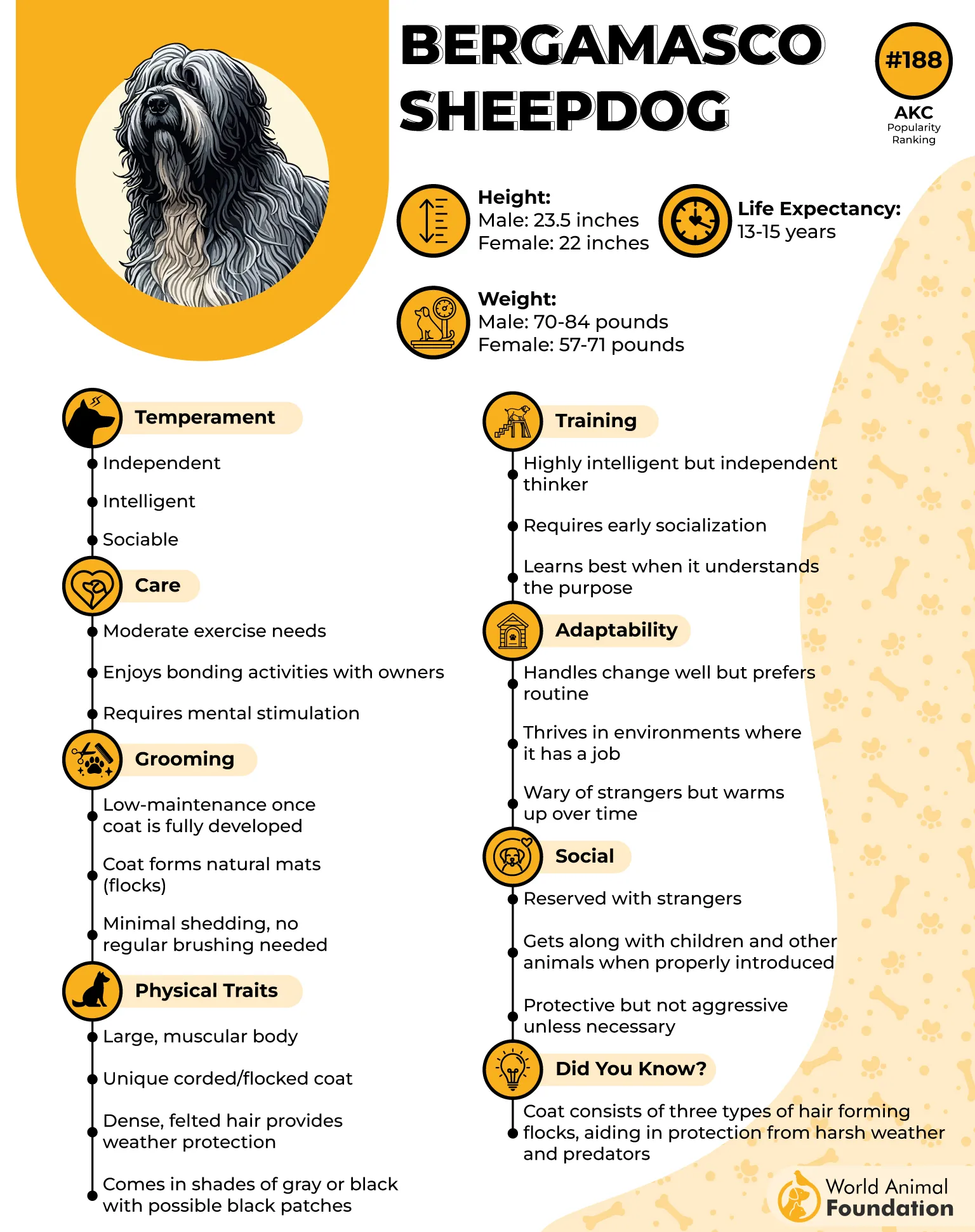
Calm and Low-Need Indoors
Although they were bred for mountain herding, Bergamascos stay composed and relaxed inside the home. Their energy is controlled and predictable, and they don’t demand constant play or stimulation. Most will settle nearby, quietly watching their surroundings without causing disruption.
Naturally Attached to Their People
This breed bonds closely with its human family and forms long-term connections built on routine and quiet loyalty. They are known to be deeply loyal without being overly demanding. Their sensitivity to tone and mood helps them respond well to stable households.
5. Azawakh
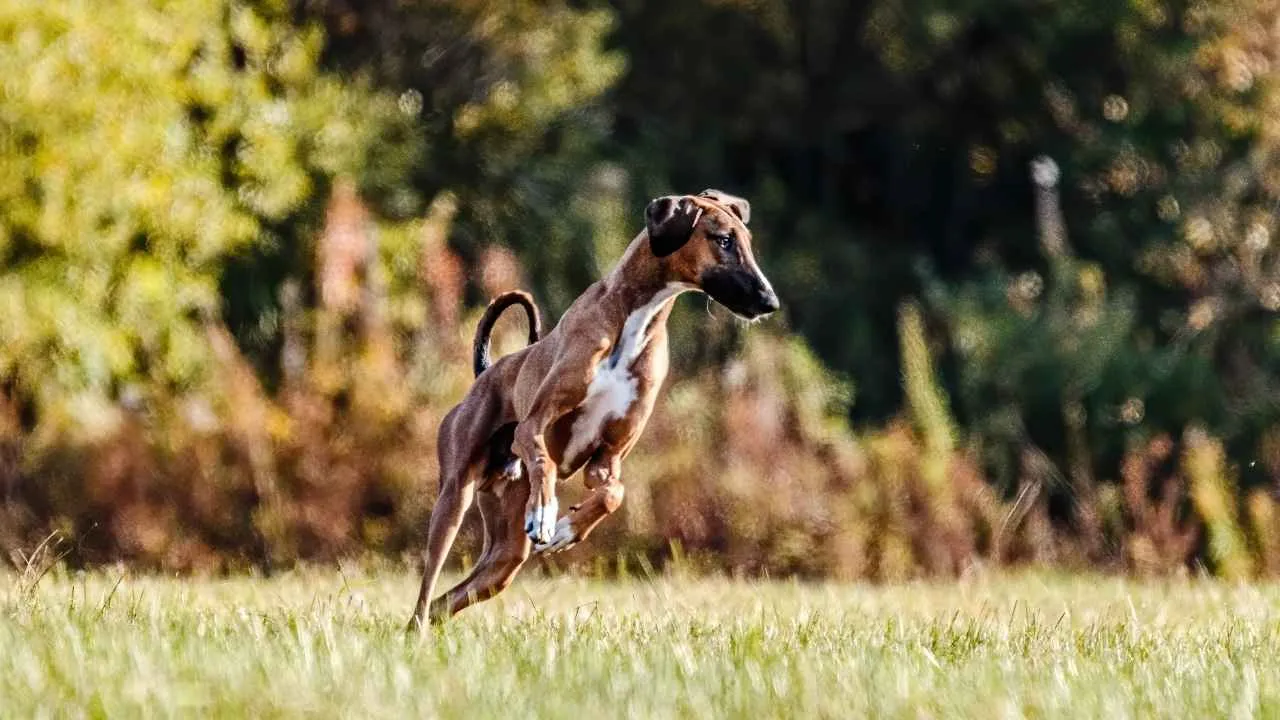
Bred by Tuareg nomads, the Azawakh has a tall, slender build that’s more about endurance than appearance. Their light frame and short coat help them regulate body temperature in extreme heat. Their movement is smooth and rhythmic, shaped by centuries of desert survival.
Low Grooming with Minimal Shedding
Their fine coat is one of the lowest maintenance among sighthounds, needing little more than a soft cloth wipe or occasional brushing. They rarely carry odor and have very low shedding levels throughout the year. Frequent baths are unnecessary due to the absence of an undercoat.
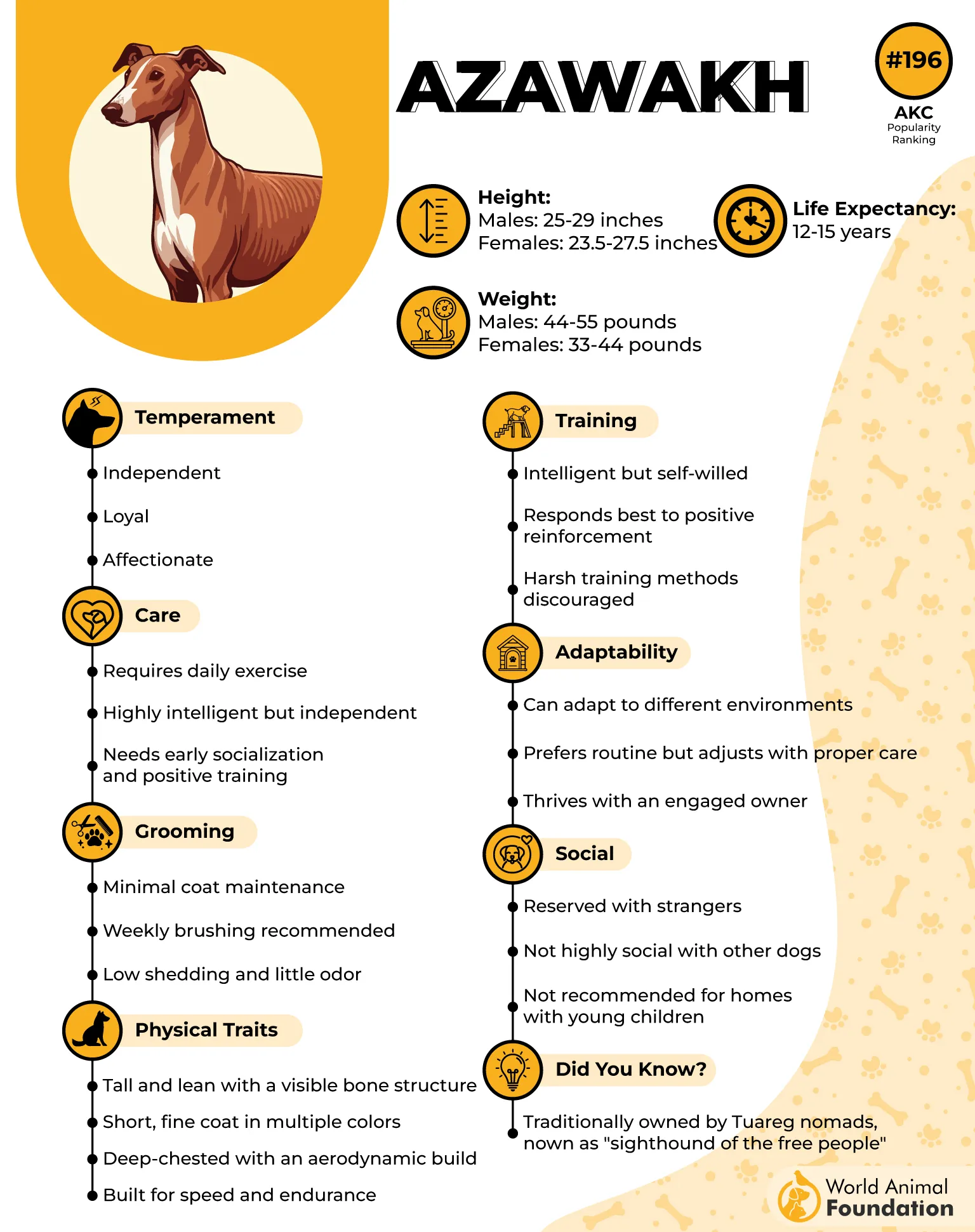
Quiet Indoors, Alert in Open Spaces
Azawakhs stay reserved and quiet indoors, often lounging in one place for hours without pacing. They bond deeply with family but tend to stay distant from strangers, maintaining a calm but observant demeanor, as mentioned in Showsight Magazine. Their need for space is balanced by an ability to self-regulate energy.
Selective Loyalty and Gentle Demeanor
While they may appear detached, they are intensely affectionate with those they trust, forming strong bonds within the household. As one of the rarest dog breeds, their presence outside West Africa is still limited. Owners often describe them as emotionally sensitive yet self-contained.
6. Canaan Dog
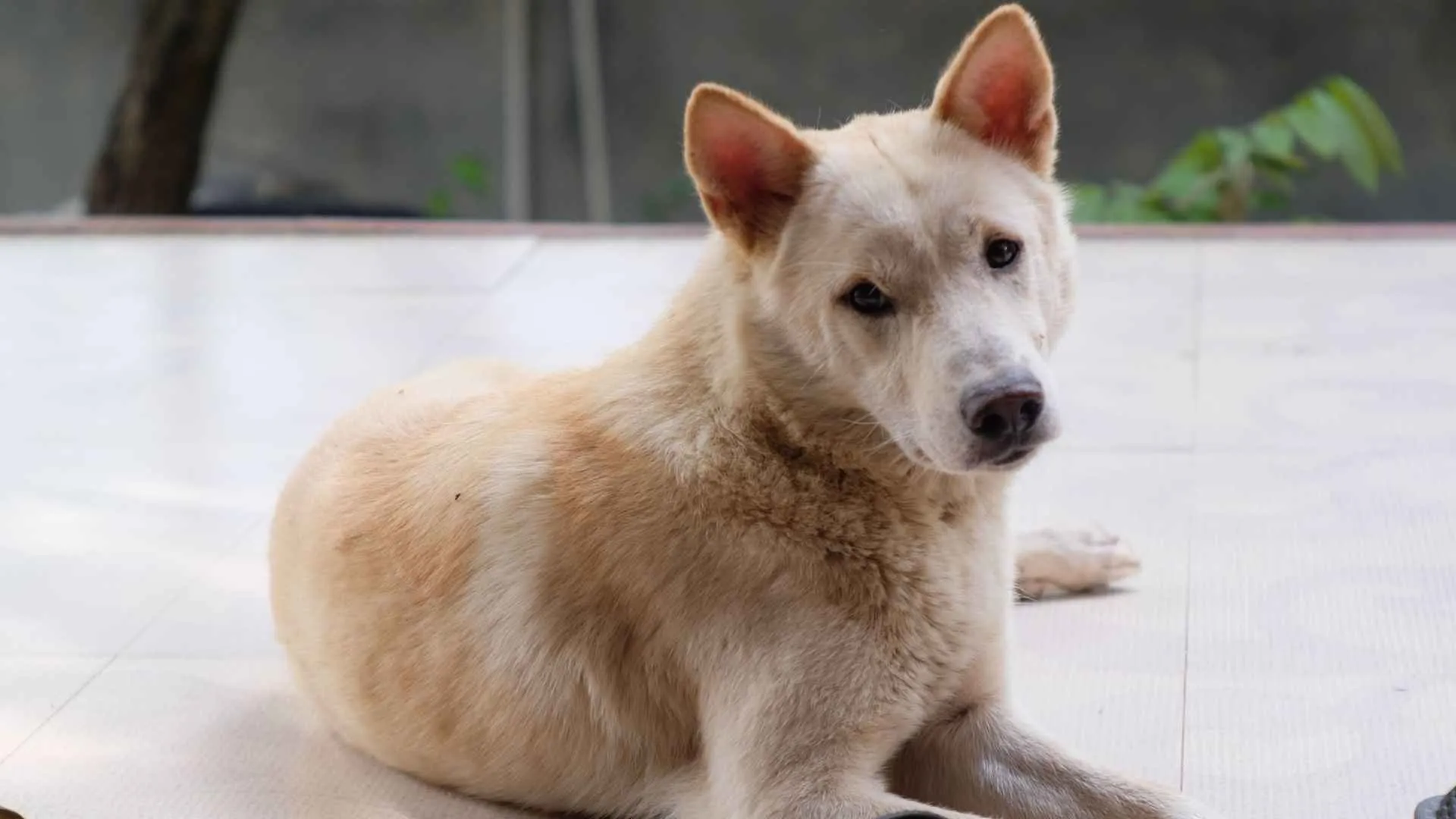
The Canaan Dog descends from pariah dogs that survived in the deserts of the Middle East for centuries. They adapted to harsh climates, minimal food, and self-reliant living. This independent streak still influences their strong survival instincts and alert behavior.
Low Grooming and Clean Habits
Their double coat is weather-resistant and naturally repels dirt, making grooming easier than most breeds. They shed seasonally but require only weekly brushing to stay in good shape. Their skin tends to stay odor-free even with outdoor activity.
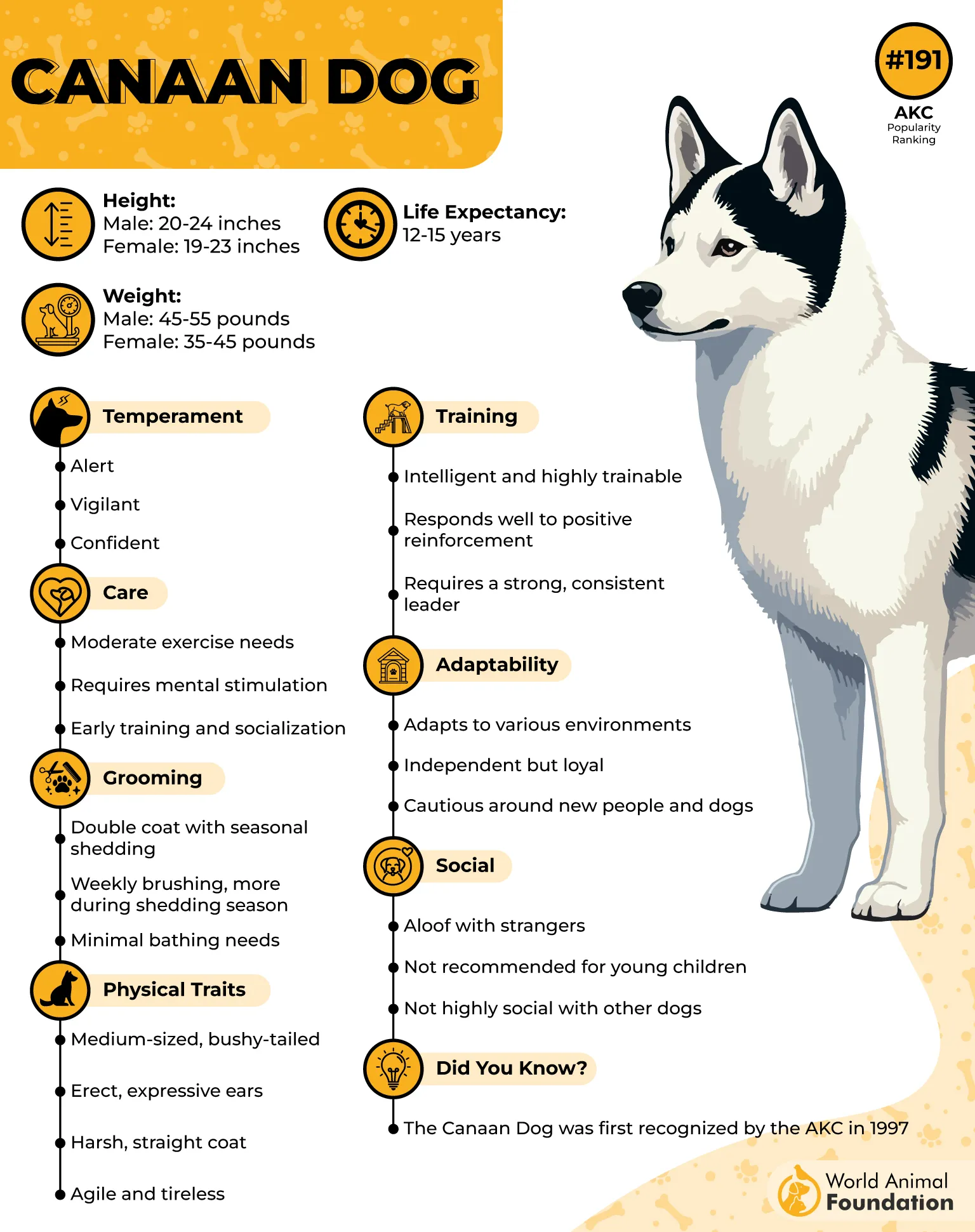
Adaptability with a Watchful Nature
Canaans remain attentive to their surroundings but rarely overreact without cause. They learn routines quickly and can live comfortably in both quiet rural spaces and busier neighborhoods. Their territorial awareness makes them excellent silent observers rather than bark-heavy guards.
Training with Clarity and Consistency
They respond best to structure and clearly communicated expectations, especially early in life. Positive reinforcement works well, but repetitive drills tend to bore them. Their intelligence leans more toward situational awareness than performing learned tricks.
7. Otterhound

Otterhounds have webbed feet and a strong frame built for long-distance swimming across rivers and streams. Their double coat resists water, staying functional even after full submersion. These traits once made them essential in pack hunting during England’s now-banned otter hunts.
Coat Care Isn’t Overwhelming
Though the coat is shaggy and textured, it doesn’t mat easily if brushed once or twice weekly. Dirt often falls away as it dries, meaning bathing is needed only when truly necessary. The natural oils in their skin help keep the coat weather-resistant.
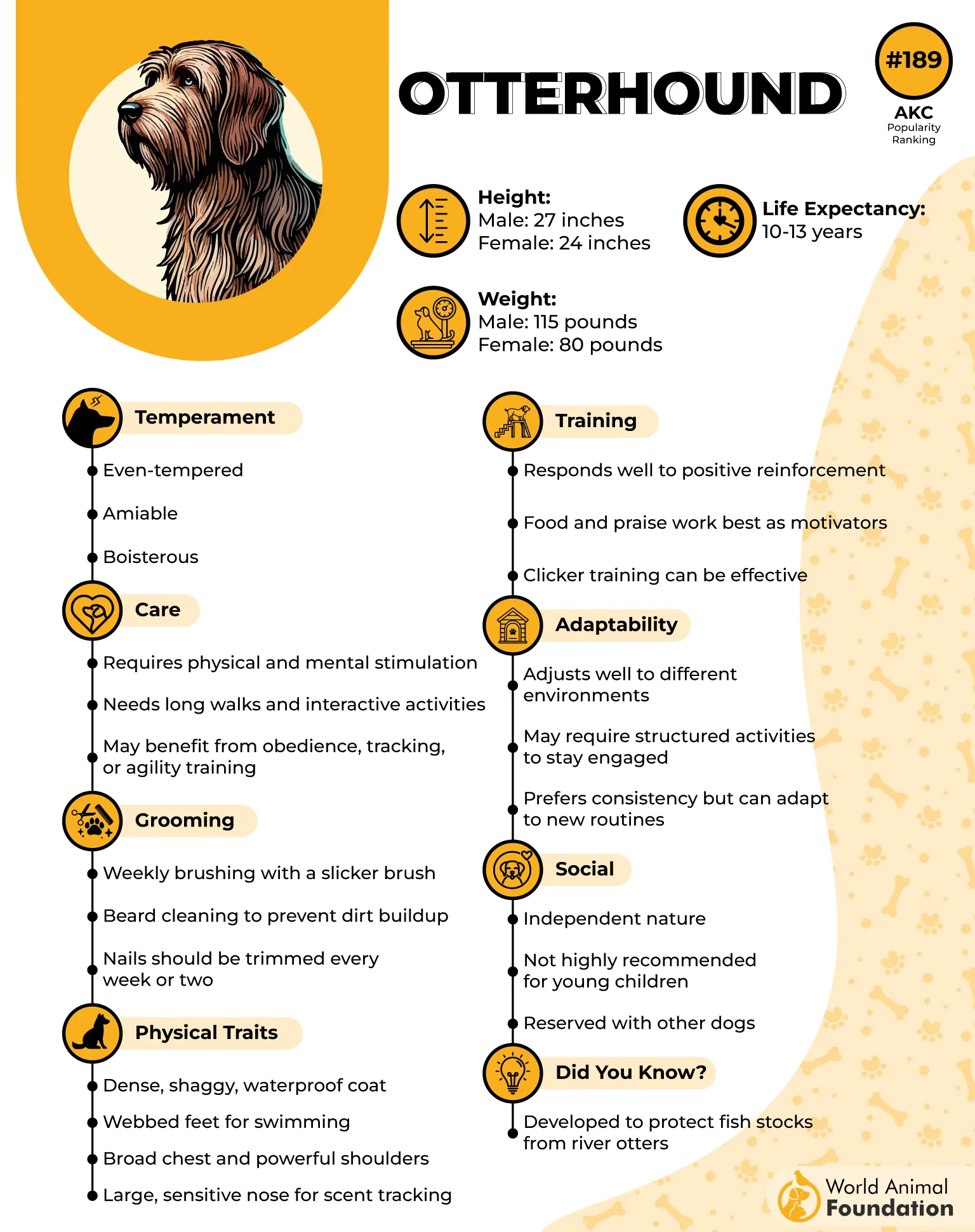
Calm Nature Indoors
Otterhounds are slow-moving and relaxed when not active, making them easy to manage in the home. They enjoy lounging, often finding a favorite spot and sticking to it for hours. Their voice is deep and occasional, not something that overwhelms a household.
Independent but Low-Demand
They were bred to work in small groups with minimal guidance, which gives them a strong sense of independence. Daily outdoor time is important, but they don’t crave constant interaction. Their laid-back mindset suits owners who want a dog that enjoys space and quiet.
Concluison
From desert survivors to ancient decoy dogs, these lesser-known breeds remind us how wide and fascinating the dog world really is. Many are AKC recognized, but still fly under the radar.
Some have a keen sense for scent, others a gentle nature shaped by centuries of quiet work. A few make excellent lake dogs or impress in canine sports with little fanfare. Whether you’re drawn to a medium-sized dog, a natural bird dog, or simply want a companion with real depth, these breeds stand apart.
They aren’t for every home, but for the experienced dog owner, discovering the rarest dog breeds opens the door to loyalty, intelligence, and a life less ordinary, as noted by the American Kennel Club.


